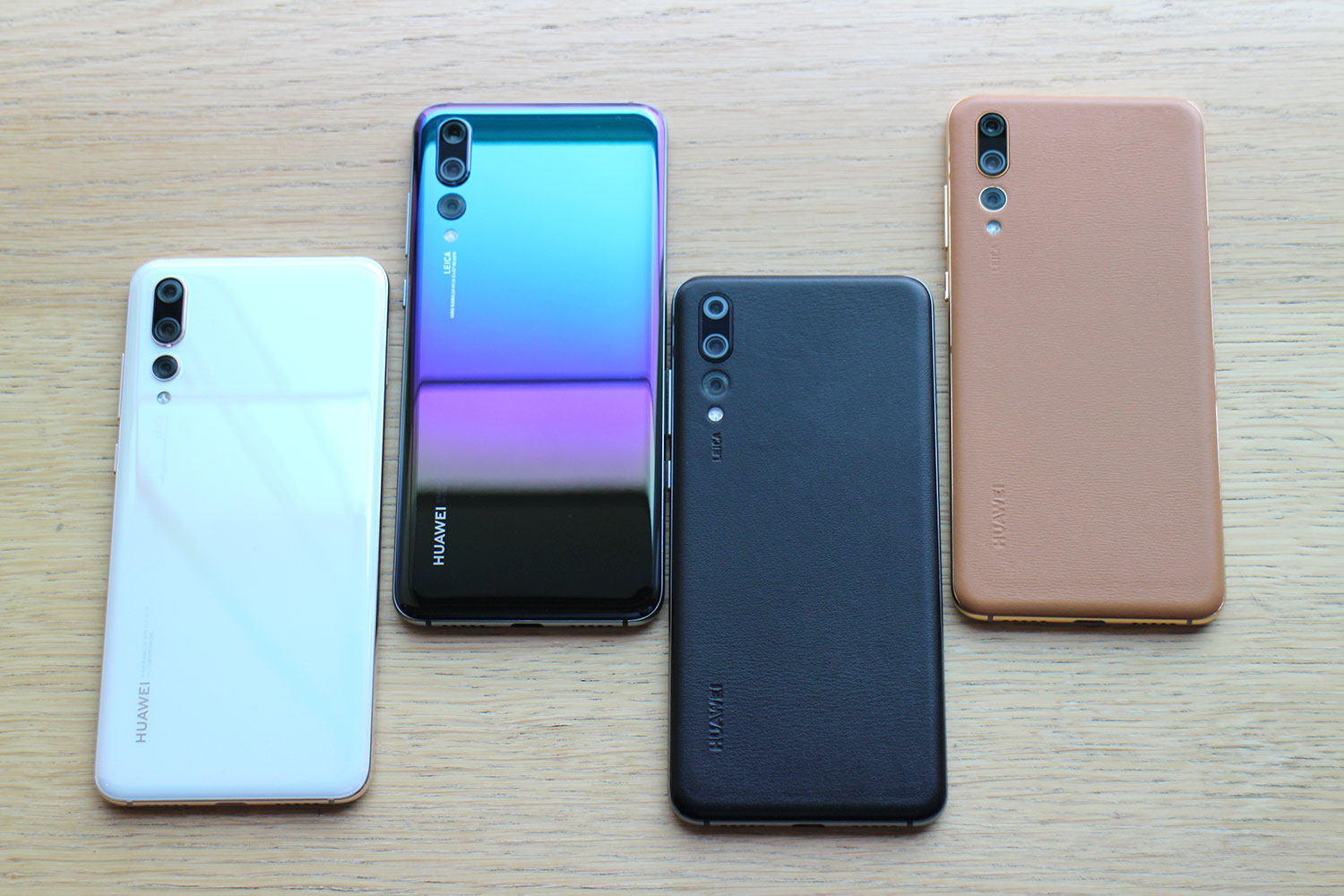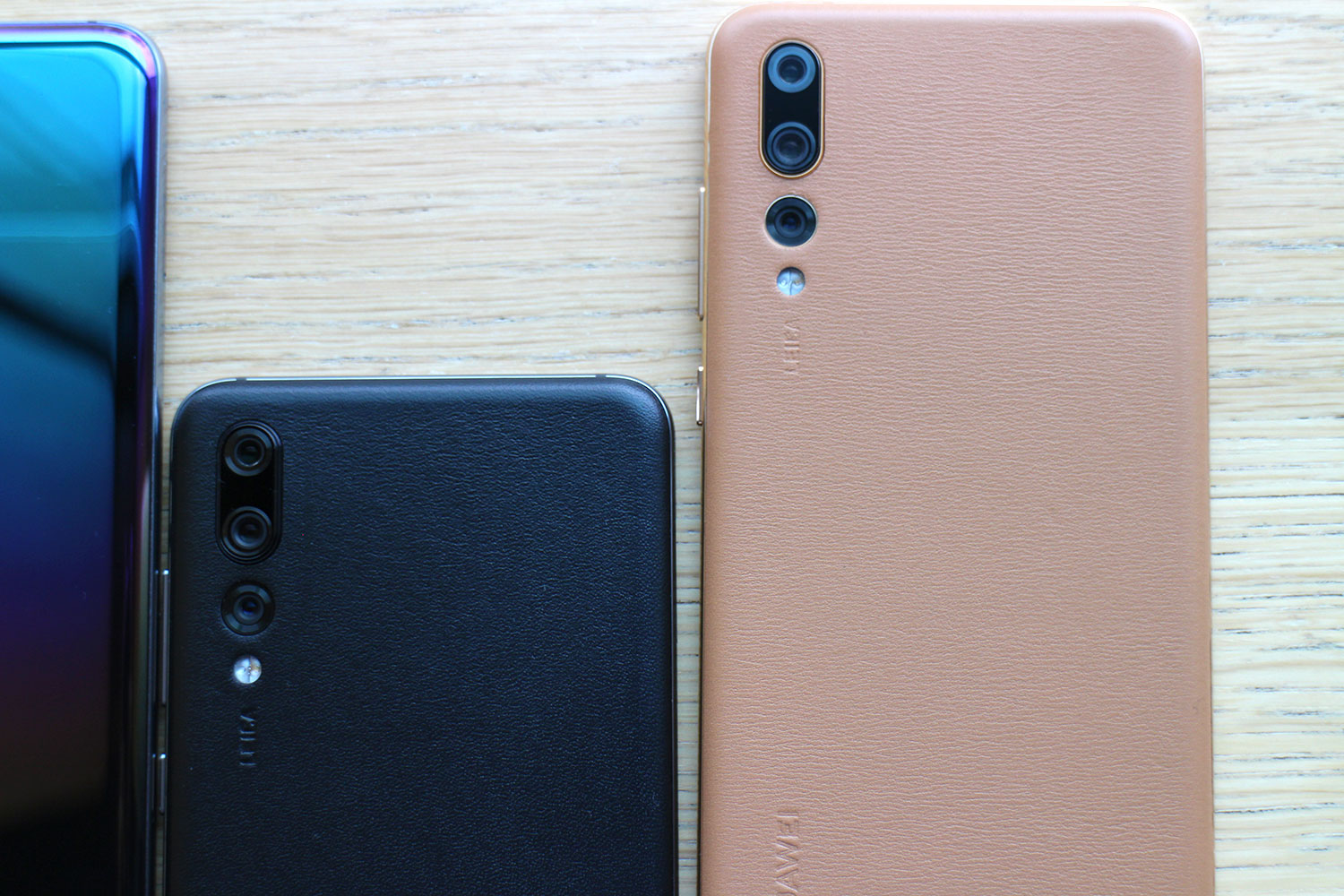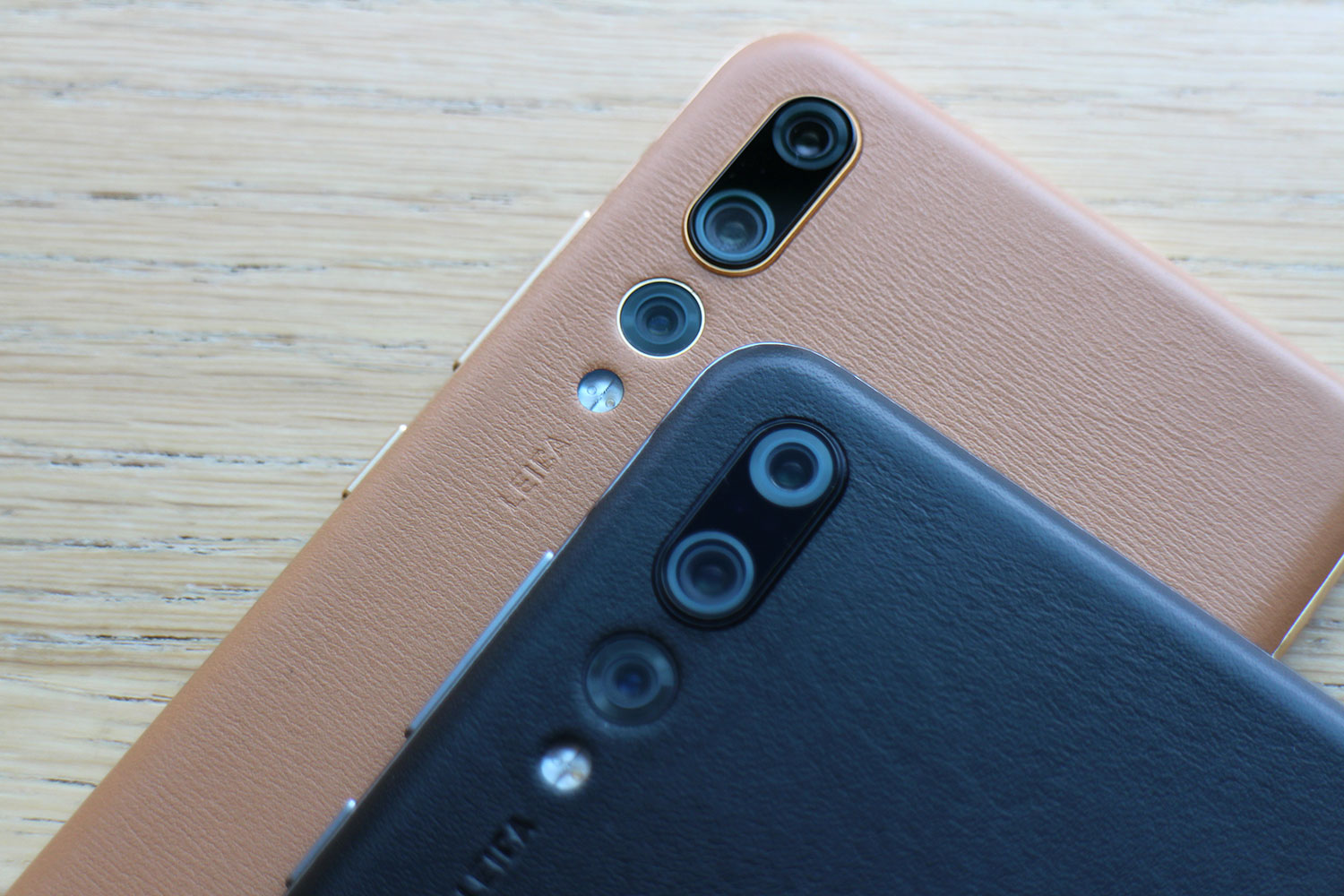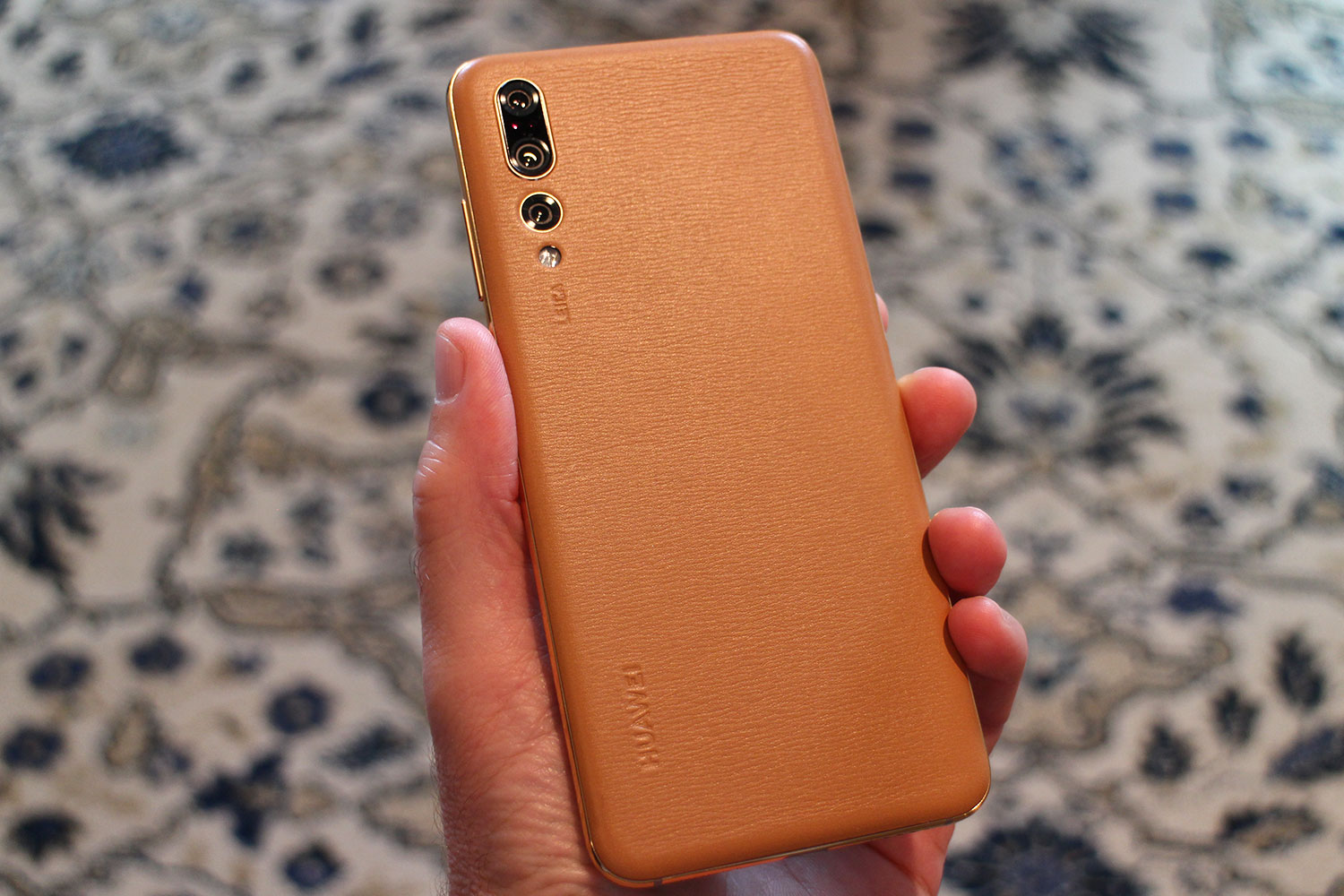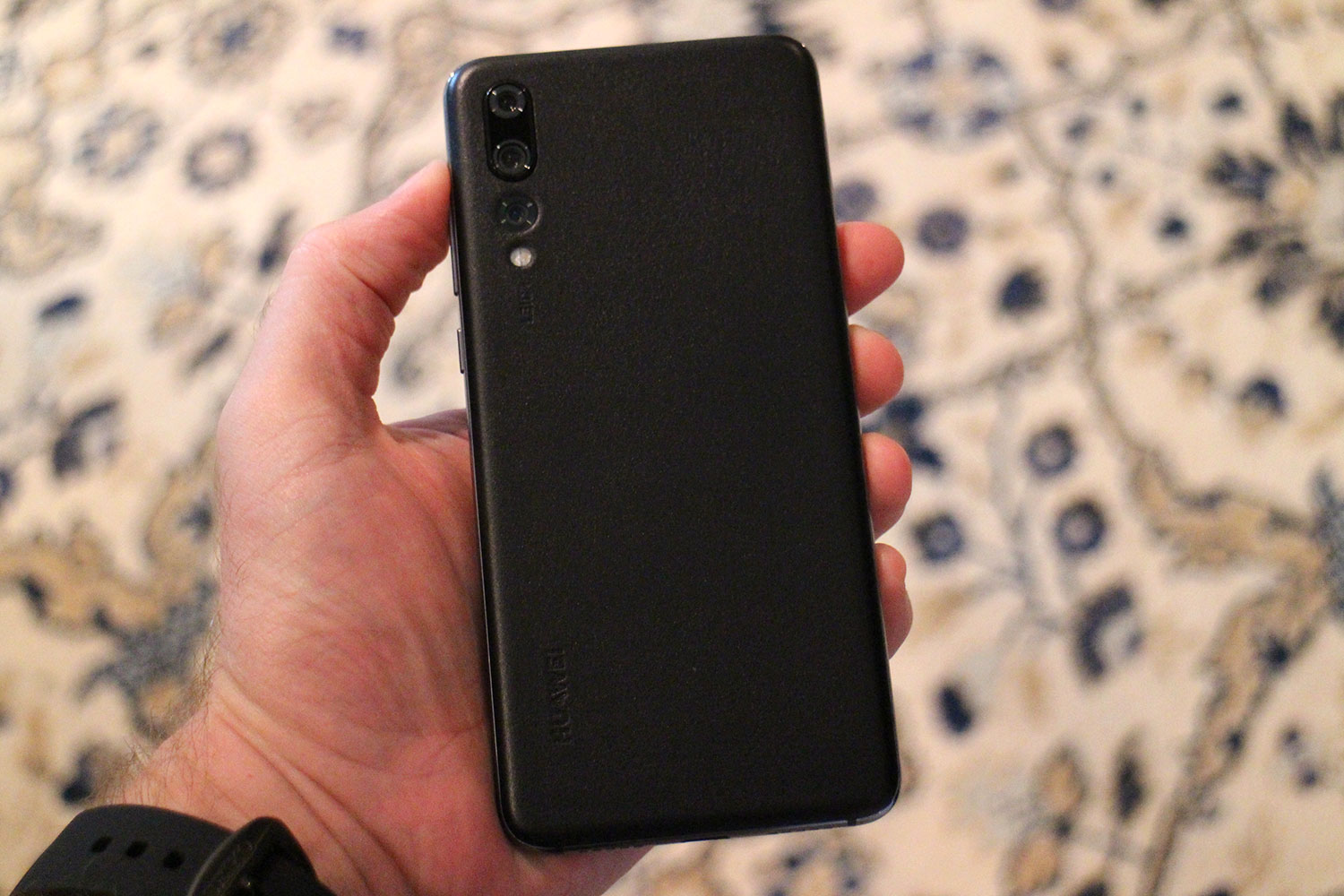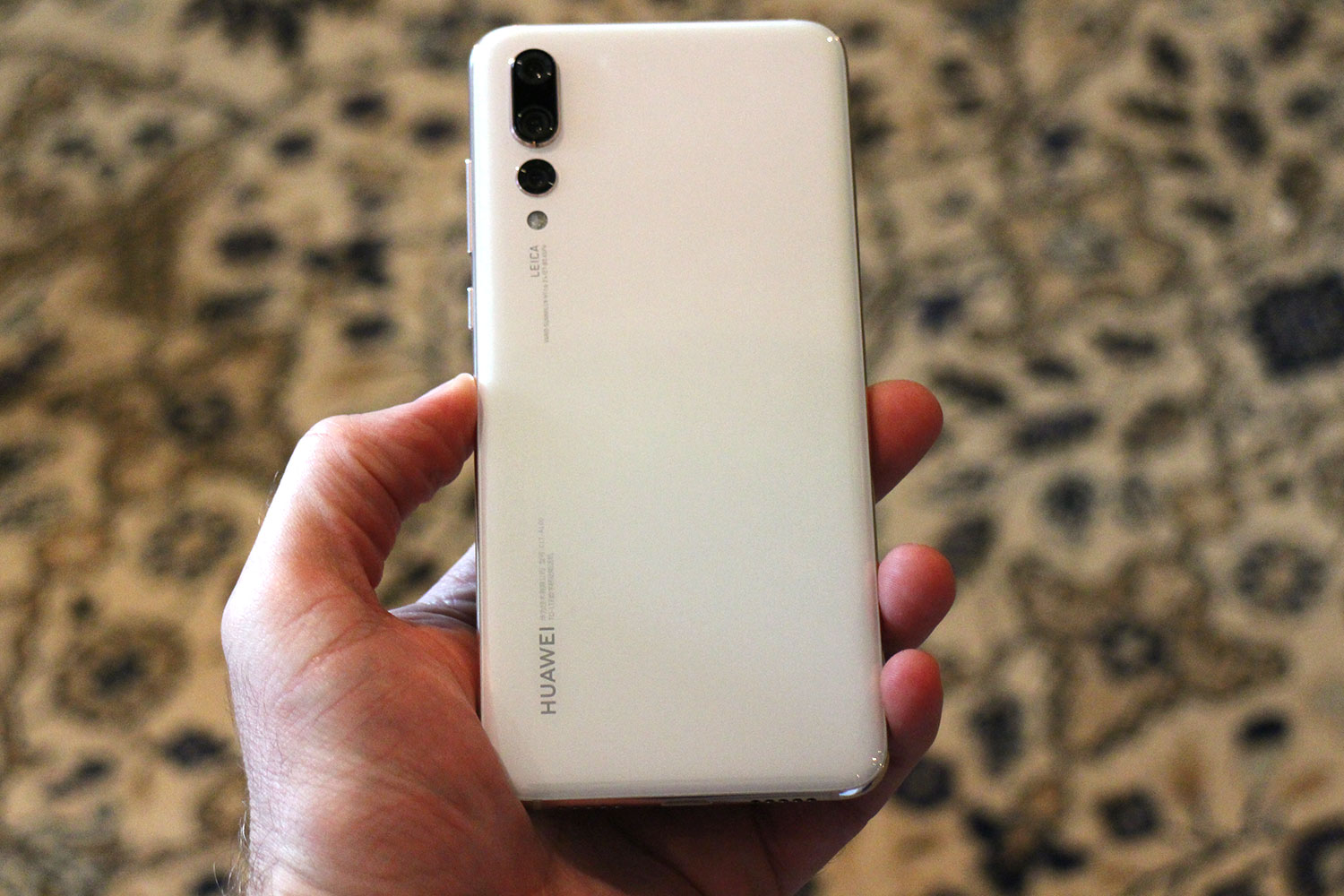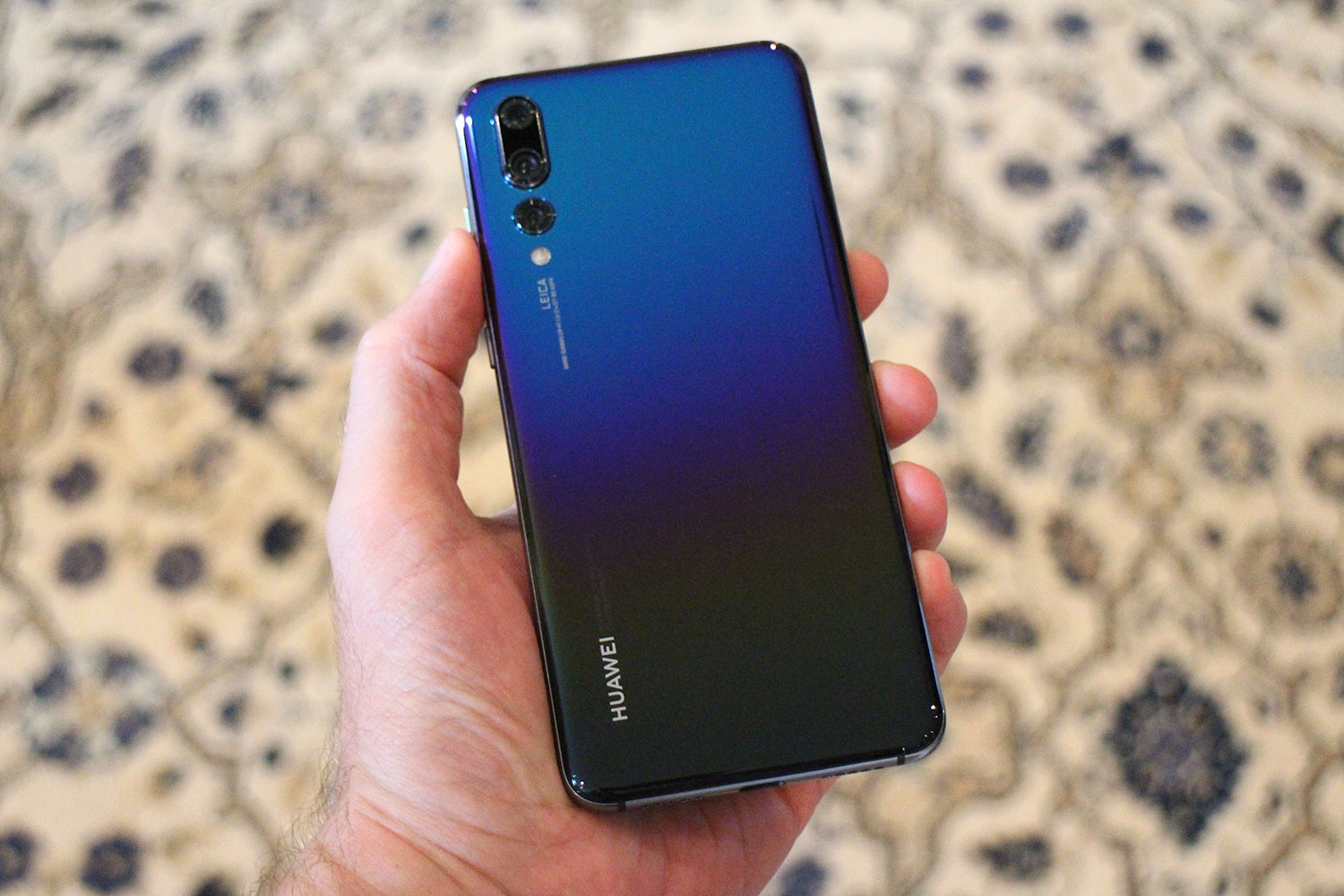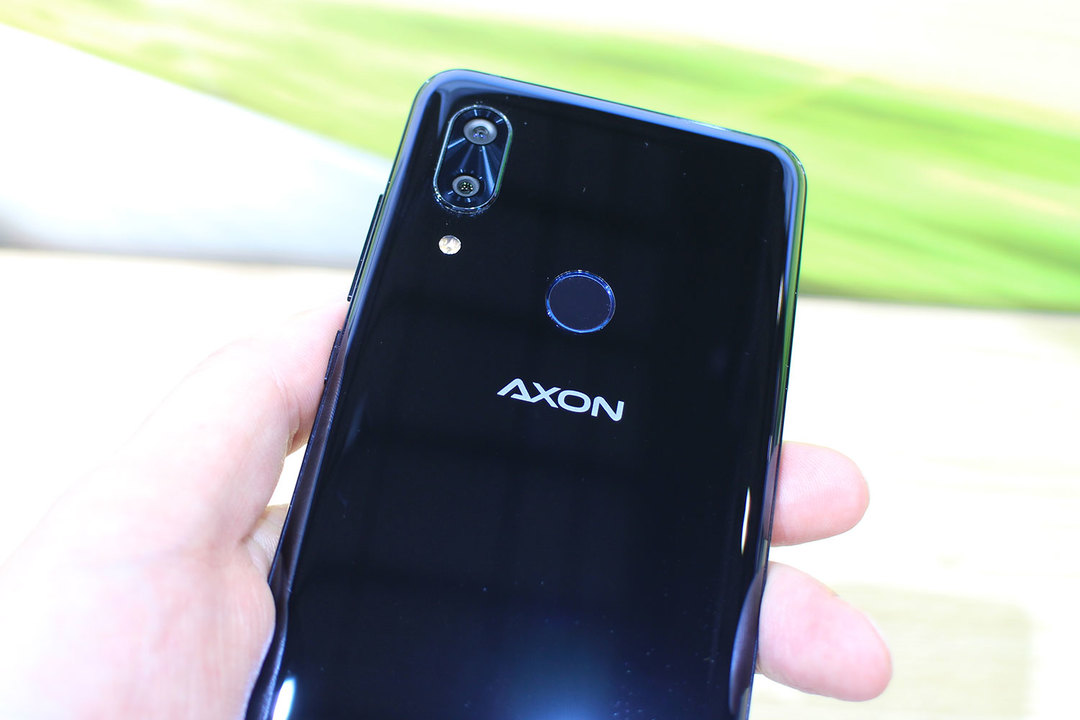Following in the footsteps of last year’s P10, the Huawei P20 brings a lot of exciting new features to the table. This year’s flagship comes in three flavors: The Huawei P20, Huawei P20 Pro, and Porsche Design Huawei Mate RS.
Here are all the details we have about the Huawei P20, and you can read our comprehensive review of the P20 Pro here, and the Porsche Design Mate RS here.
New colors
Is there anything that isn’t improved by being wrapped in leather? Many will have different answers to this, but we’d argue that the smartphone always gets an additional point if it has a leather back. Just look at the amount of leather cases there are in the world, the leather-clad LG G4, and numerous Vertu (RIP) phones for proof. Huawei is the latest to agree, and has added two leather-bound P20 Pro models to the range, and they’re exquisite.
There are two versions. A tan leather matched to a muted gold chassis, and a black leather with an almost gunmetal gray steel chassis. The black version oozes class, but it’s the tan leather model that’s most eye-catching. The leather doesn’t feel thick, and has that wonderfully warm and tactile feeling we expect from the material. It closely follows the contours of the phone, doesn’t bulge at the corners, and generally looks like it was supposed to be there from the start.
The two leather versions are accompanied by two new non-leather colors: A different version of the original P20 Pro twilight color called aurora, and a pearl white. The pearl white is the more interesting of the two, and it gives the phone a softer, less aggressive style. The aurora reverses the color gradient of the twilight — so it shifts from top to bottom, rather than vice versa — and it has a slight rainbow effect in the right light.
We are waiting for any price differences to be confirmed, and also on details of where and when these new colors will be available.
Updates
In early June, Huawei president Kevin Ho announced the smartphone giant shipped six million P20 and P20 Pro handsets during their first 10 weeks on the market. This represents an 81 percent increase in shipments during the same period year on year. The company believes its focus on premium handsets and excellent camera equipment — especially the triple-lens P20 Pro — contributed to the remarkable growth in shipments.
Design and display

The P-Series is usually Huawei’s “fashion-forward” smartphone, with an emphasis on design, and the Huawei P20 is no exception. It features an all-glass case that’s curved on all four sides. The phones have a bezel-less display with an aspect ratio of 18:9. The P20 Pro and Porsche Edition Mate RS feature a triple camera array on the back, while the P20 has a dual-camera setup. All three phones feature a fingerprint sensor that sits at the bottom of the phone.
The P20 and P20 Pro ship in four colors: Black, midnight blue, pink gold, and twilight. While all of the colors are attractive, the twilight model is a showstopper, with a gradient pattern that shifts from purple to teal. The Porsche Edition Huawei Mate RS color options are more limited — black will be available in all markets, while a limited-edition red case will be sold in China.
The Huawei P20 Pro features a 6.1-inch OLED display with a resolution of 2240 x 1080. The Huawei P20 has a 5.8-inch LCD screen with the same resolution. The Porsche Design Huawei Mate RS features a 6-inch OLED screen. And yes, Huawei did decide to go with a top notch on all three phones. It appears to be solely a design choice, as there is a setting that can make the notch disappear by dimming the display around it.
Specs and battery

Huawei P20 Pro Specs
- CPU: Kirin 970
- Memory: 6GB
- Storage: 128GB
- MicroSD storage: No
- Display size: 6.1-inch OLED
- Resolution: 2240 x 1080
- Connectivity: Bluetooth, NFC
- Battery: 4,000mAh
- Size: 155 mm x 73.9 mm x 7.65 mm
- Weight: 180g
- Operating system: Android 8.1 Oreo
Along with the Mate Series of phones, Huawei’s P Series represents the company’s flagship devices, and therefore are packed with the latest tech. All three models feature the company’s Kirin 970 processor. RAM varies depending on the exact model, with the P20 Pro and Porsche Design Huawei Mate RS packing 6GB of memory each, while the P20 comes in at 4GB. The Kirin processor features Huawei’s Neural Processing Unit (NPU), which does most of the heavy lifting in terms of A.I. tasks.
Both P20 models come with 128 GB of storage, while the Porsche Design Huawei Mate RS comes with a 256GB and 512GB storage option. None of the phones feature a MicroSD slot, so there’s no option for external storage. As for battery capacity, the P20 and Porsche Edition Mate RS feature a hefty 4,000mAh battery, while the P20 comes in at 3,400mAh.
There’s also a significant durability difference between the Huawei P20 and P20 Pro. The IP ratings are quite a bit different: The P20 has a shabby IP52 rating, meaning it won’t handle much more than some dust and drops of water, while the Huawei P20 Pro has the more typical IP67 rating we’ve come to expect on phones. The IP rating was not disclosed for the Porsche Design Huawei Mate RS.
Software and special features

The Huawei P20, P20 Pro, and Porsche Edition Huawei Mate RS ship with Android 8.1 Oreo. You’ll find the latest version of EMUI, Huawei’s customer interface, on the phone as well. The EMUI update offers some minor improvements over its predecessor.
Several phones in 2017 featured face unlock, including the iPhone X and the OnePlus 5T, and Huawei added a similar feature to the new phones. The face unlock feature on the phones uses 2D mapping to authenticate users in just half a second. Like the iPhone X, the feature will also work in the dark. Unlike the iPhone X, the feature is not secure enough to authorize payments.
Camera

Huawei’s phone cameras have been great performers since the company began its partnership with Leica. How will it improve on the P20? Well, it looks like Huawei added some pretty impressive new hardware and software features to make the camera on the P20 its best yet — and camera sensor testing company DxO Mark confirms that the goal has been met.
First things first: The Huawei P20 Pro and Porsche Design Mate RS are the first phones we’ve seen with a triple camera array. They’re equipped with a 40-megapixel main lens with A.I. Image Stabilization (AIS). The secondary camera comes in at 8 megapixels with Optical Image Stabilization, while the tertiary lens is a 20-megapixel mono lens. Each lens carries a different aperture from f/1.6 to f/2.0, meaning you should be able to get good shots in just about any lighting condition.
The front-facing camera on the Huawei P20 Pro and Porsche Design Huawei Mate RS comes in at 24 megapixels and, like the other lenses, is Leica branded, which bodes well for overall quality. It features an aperture of f/2.0, which is pretty good for a selfie cam, just don’t expect amazing shots in low light.
As for the Huawei P20, you’ll find a dual rear camera array with a 12-megapixel primary lens accompanied by a 20-megapixel monochromatic secondary lens. The primary lens features an aperture of f/1.8 while the mono lens comes in at f/1.6. Like other Huawei phones, the monochrome lens should help users get better shots in low light. You’ll also find the same 24-megapixel Leica-branded camera on the P20 that appears on the P20 Pro.
In addition to hardware, Huawei has added some interesting software features to its newest flagships. The camera relies on A.I. to make image adjustments based on object recognition; while the P10 could discern between 13 different scene-recognition modes, the P20, P20 Pro, and Porsche Design Huawei Mate RS up the ante by identifying 19 different common scenes. A.I. also helps with composition by adding a horizontal line to the viewfinder to ensure the shot is level.
You’ll also find a super slow motion feature on these phones that are similar to what you’d find on the Samsung Galaxy S9 Plus. With super slow motion, you can increase your camera’s frame rate to 960 fps for 0.2 seconds to get a Matrix-like effect.
All that hardware has earned the P20 Pro the highest DxO Mark smartphone rating yet, with a score of 109. The plain P20 earns a still high, second-place 102. The DxO champions are getting shorter and shorter times on the throne — the P20 Pro replaces the previous top scorer, the Samsung Galaxy S9+, after less than a month. Before that, the Google Pixel 2 replaced the iPhone X as the top-scoring smartphone camera. DxO credits the P20 and P20 Pros’ larger-than-average sensor, monochrome camera, and triple lens setup for that high score. The difference is so significant that DxO Mark says it looks like “Huawei has skipped one or two generations.”
Release date and price
All three phones are available now. Pricing for the Huawei P20 comes in at 649 euros ($805), while the P20 Pro is available for 899 euros ($1,115). The 256GB version of the Porsche Edition Huawei Mate RS will sell for 1,695 euros ($2,103), while the 512GB variant will go for 2,095 euros ($2,600).
Updated on August 31: New P20 Pro colors announced.
